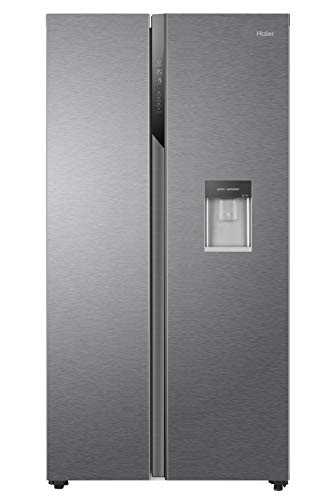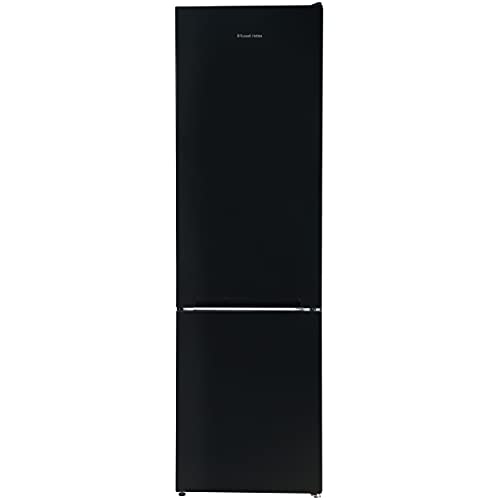Fridges And Freezers Tips From The Most Successful In The Business

Understanding Fridges and Freezers: The Essential Kitchen Appliances
Fridges and freezers are 2 of the most essential appliances in modern cooking areas. These devices serve a vital role in food preservation and waste reduction by making sure that disposable products stay fresh and safe for consumption. This post explores the different kinds of fridges and freezers, their performances, and important factors to consider for selection and maintenance.
Types of Refrigerators
The marketplace uses a range of refrigerator types, each developed to satisfy various customer requirements. Below is a list of the most common kinds of fridges:
-
Top-Freezer Refrigerators
- Most common type.
- Freezer compartment is located above the refrigerator area.
- Typically more budget-friendly and energy-efficient.
-
Bottom-Freezer Refrigerators
- Freezer is situated at the bottom.
- Allows much easier access to fresh products at eye level.
- Often includes pull-out drawers for much better organization.
-
Side-by-Side Refrigerators
- Refrigerator and freezer sections are adjacent.
- Suitable for narrow kitchen areas and permits simple access to both compartments.
- Frequently comes with water and ice dispensers.
-
French Door Refrigerators
- Combines a bottom freezer with double doors at the top.
- Offers ample storage and elegant styles.
- Typically consists of features like temperature-controlled drawers.
-
Compact Refrigerators
- Smaller sized size perfect for restricted areas.
- Commonly used in dormitory rooms, small apartments, or as secondary fridges.
Table 1: Comparison of Refrigerator Types
| Type | Benefits | Downsides | Typical Size |
|---|---|---|---|
| Top-Freezer | Cost effective, energy-efficient | Less hassle-free access to the freezer | 14-30 cu. ft. |
| Bottom-Freezer | Simpler access to fresh food | Freezer can be more difficult to arrange | 19-30 cu. ft. |
| Side-by-Side | Easy access, water/ice dispenser | Narrow vs. storage space | 22-30 cu. ft. |
| French Door | Trendy, roomy, organized | More pricey | 20-30+ cu. ft. |
| Compact | Space-saving, portable | Minimal storage | 1.7-5.5 cu. ft. |
Types of Freezers
Freezers are a similarly crucial appliance for food conservation. They come in various styles developed to fit different household requirements. Think about the list below types:
-
Upright Freezers
- Operate like a standard refrigerator with vertical storage.
- Easier to organize with shelves and compartments.
-
Chest Freezers
- Big, horizontal style generally offering more storage area.
- Maintains temperatures much better throughout power interruptions.
- More energy-efficient than upright designs.
-
Portable Freezers
- Compact systems perfect for outdoor activities or little spaces.
- Frequently used for camping journeys or as short-lived storage.
Table 2: Comparison of Freezer Types
| Type | Advantages | Drawbacks | Typical Size |
|---|---|---|---|
| Upright Freezer | Simpler to arrange | Less energy-efficient, more floor area | 5-20 cu. ft. |
| Chest Freezer | Holds more items, energy-efficient | Harder to arrange | 5-25 cu. ft. |
| Portable Freezer | Compact and versatile | Limited storage capacity | 1-10 cu. ft. |
Key Features to Consider
When choosing a fridge or freezer, customers must keep in mind a number of features that can improve functionality:
- Energy Efficiency: Look for models with the ENERGY STAR accreditation to save on electrical energy expenses.
- Storage Capacity: Evaluate storage requirements based upon household size and consuming routines.
- Temperature level Control: Some devices offer digital controls for accurate temperature level settings.
- Adjustable Shelving: Customizable shelving permits ideal organization.
- Water and Ice Dispenser: Offers benefit however can use up valuable space inside.
- Sound Level: Sound scores can influence convenience, especially in open-concept homes.
Advantages and disadvantages of Having a Fridge and Freezer
While fridges and freezers are vital innovations, they also have certain benefits and downsides:
| Pros | Cons |
|---|---|
| Protect food lifespan and reduce waste | Need regular maintenance |
| Permit bulk purchasing and meal prepping | Can be expensive to acquire and run |
| Deal benefit and quick access to food | Inhabit substantial kitchen area area |
Maintenance Tips
To guarantee durability and ideal performance of fridges and freezers, think about the following upkeep ideas:
- Regular Cleaning: Clean the interior and exterior occasionally to avoid buildup of dirt and germs.
- Inspect Seals: Inspect door seals frequently for leaks to preserve effectiveness.
- Temperature Settings: Keep the fridge at 34-38 ° F and the freezer at 0 ° F for optimum food conservation.
- Thaw as Needed: Chest freezers ought to be thawed regularly to maintain performance.
- Clear Air Vents: Ensure that air flow isn’t blocked to enhance energy performance.
FAQs About Fridges and Freezers
Q1: How long can food be stored in a freezer?A: Most foods can be kept in a freezer for a number of months. Meats and poultry typically last 4-12 months, while vegetables can last approximately 8-12 months.

Q2: How typically must I clean my fridge and freezer?A: It is advisable to clean your fridge and freezer every 3 to 6 months, or as required when spills happen. Q3: Can I put hot food directly in the fridge?A: It is suggested to cool hot food to room temperature level before putting it in the fridge to avoid
raising the temperature level inside the device. Q4: Why is my fridge freezer for sale Near Me running constantly?A: This could be due to a malfunctioning thermostat, blocked coils, or door seals that aren’t working appropriately. Fridges and freezers are indispensable
possessions to modern homes, offering necessary services for food storage and conservation.
Comprehending the numerous types, functions, and upkeep requirements can help consumers choose the ideal home appliances for their requirements and maximize their performance. Embracing energy-efficient models not only supports sustainable practices however also contributes to substantial cost savings on energy expenses, making informed choices more crucial than ever.


